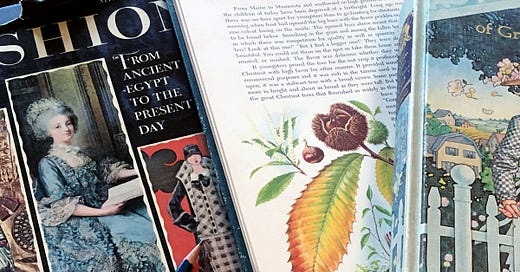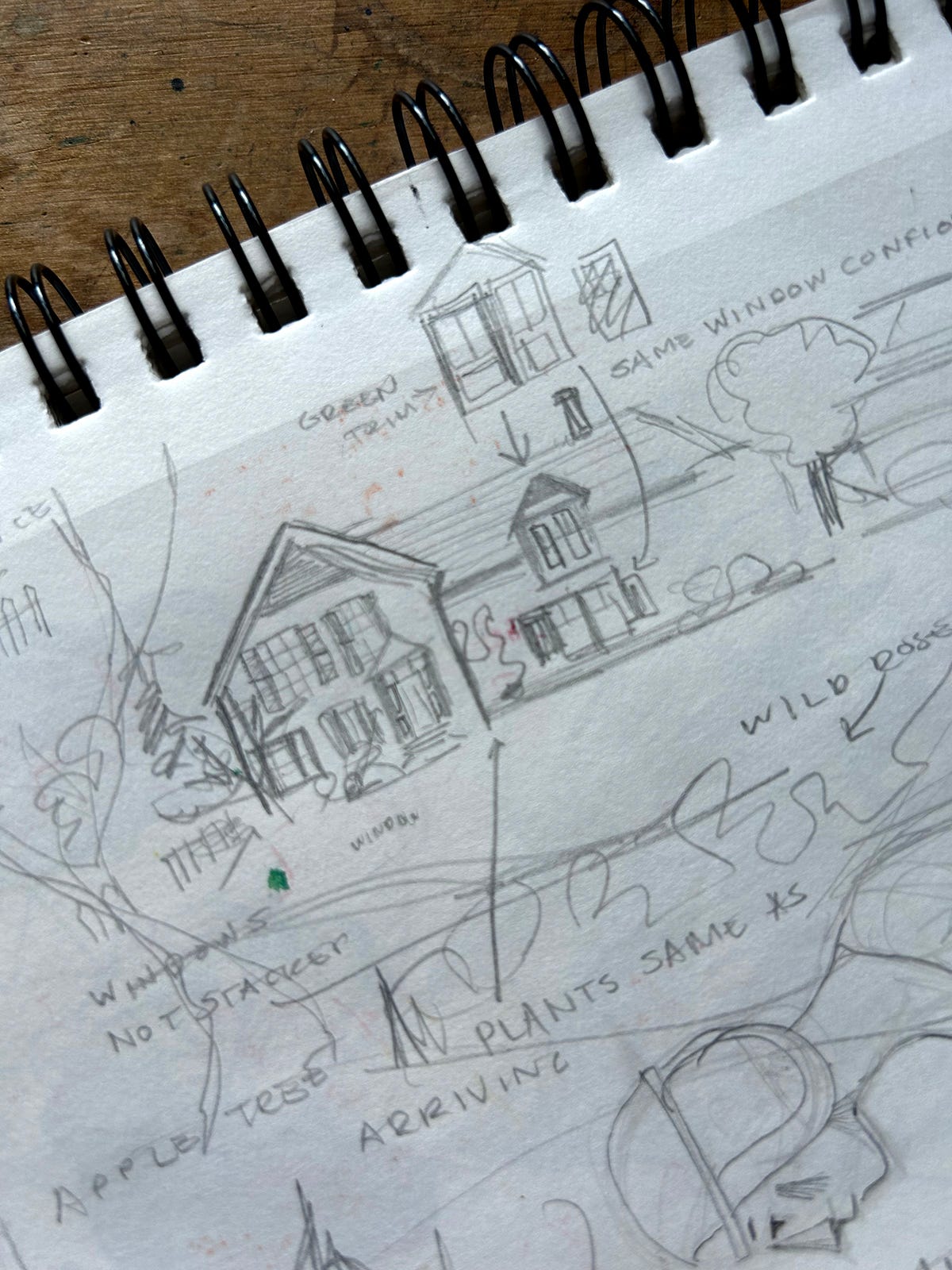Every so often, when someone hears that I illustrate picture books I get the comment, “That’s so fun! You get to draw whatever you want!” And while I appreciate the enthusiasm, this isn’t quite how it works.
Illustration is essentially Commercial Art: it is art created with parameters and expectations for a client. In contrast, Fine Art (with the exception of commissions) is more often solely bound by the limitations of the artist’s vision. So when I’m hired for a children’s book project, I know that while I’ll be able to bring my own unique vision and creativity to the project, I will work within a set framework. And part of that framework requires research.
Do all projects require research? Probably not. Neither Mama’s Belly nor Fort Building Time called for huge amounts of homework, with the exception of a handful of reference shots. But everything else? Well, it’s time to crack the books…
Research for “Anne Arrives”
All of us have an innate tendency to draw what we know. Ask me to draw a tree and it will most likely be a maple. Request an illustration of, “The Holidays” and there will be snow. But for a story set in India the maple is irrelevant. And for those in Australia, Christmas and New Year’s Day are a time to hit the beach and break out the sunscreen. Facts matter deeply in illustration. These are some pretty superficial examples of research, but often the need runs much deeper. For Bella’s Rules I read up on child development and juvenile capacity to understand personal responsibility. For Itzhak, I did a deep dive into what polio rehabilitation looked like in 1950’s Israel. In illustration, prepare to go down rabbit holes that you didn’t even know existed.
Research for “Anne’s Kindred Spirits”
So what resources do I use for illustration research?
Books: Books. Lots of books. ALL THE BOOKS! Everyone’s first tendency when researching is to go to the internet. And nine times out of ten, this is a pretty effective solution. But there’s something to be said for getting a 50 pound stack of books at the library and holing up for a day of reading. Books allow for a serendipity that the interwebs don’t always provide. The internet will safely suggest and guide you to what you’re looking for. Books will allow you to browse and meander and often find things you weren’t intending to consider. You may be planning to draw a Toucan, but when flipping through a bird book, pause because the Quetzal is astoundingly beautiful. Also reading from print material allows the brain to process information more deeply than through reading on a screen. If you have the ability, begin to curate your own personal collection of reference materials. Thrift shops and yard sales are great for bargain priced books. Over the years, I’ve acquired various field guides for fish, birds, trees and flowers. I have a couple historical costuming books. And books that detail poses and angles of the head are always incredibly helpful.
Pinterest: I know, I know, I just told you don’t use the internet, but now I’m saying do use the internet. The point I want to make is don’t rely too much on online resources. Let the internet be a tool and not a crutch. But back to Pinterest. Where I find Pinterest useful is categorizing the resources I’ve already unearthed through the use of Private Boards. For Itzhak, Mouseboat and Taproot Magazine, I used Pinterest to store reference images, to help in establishing mood and for checking accuracy. The one caveat I’d offer is don’t be too heavily influenced by the images that Pinterest suggests. Be intentional in what you’re pinning and why you’re pinning it (in other words, don’t get steered too far off course).
Because Itzhak is a picture book biography of a living person, accuracy was absolutely crucial. I spent hours hunting down reference images and watching videos of Itzhak Perlman performances. A picture is good, but a recorded performance shows you even more. And the great news is you can pin both photographic and video links on Pinterest, creating a way to gather all your research in one place.
Take a Picture: I remember when I was a student reading an interview with a well-established illustrator who admitted to always needing to take photo reference of hands. I felt profoundly relieved reading that! Drawing hands is hard. Drawing bikes is difficult. Drawing horses how do you even. The fact is, don’t depend on the images in your own head to establish accuracy (this is a great example of why). Stuck on a pose? Photograph friends and family. My niece modeled for Bella’s Rules and my nephew posed for illustrations in Itzhak. Can’t draw sheep? Spend a day on the farm. Architecture got you down? Check out Google 3D renderings. If you’re a Mac user, Photobooth is your friend. If I’m in a pinch, I’ll shoot a quick picture of myself. It’s also why I’ve asked my family to burn my computer if I have an untimely death. I’d prefer the internet never see images of me wielding a T-Square like a sword or pretending to be Anne Shirley flipping out on Rachel Lynde. Anybody remember the Photobooth Reference tumblr? We’ve all been there…
Keep a Photo Library: My phone is full of random photos that I’m convinced will someday find their way into books. There’s lots of images of trees and flowers. I’m obsessed with a picture of the New London Ledge Lighthouse I snapped on the way to a Long Island funeral. My nieces and nephews always make their way into projects. And on my desktop is a whole folder of images and I also keep a private Pinterest board with interesting photographic reference. If it looks good keep it; it’ll find a use down the line.
Draw, Draw, Draw: Before I even start illustration sketches, I make sure I have a familiarity with the subject matter. In the case of the Anne books, I spent ages drawing horses and buggies in my sketchbook. To illustrate them well meant I had to understand them first, inside and out. So don’t pull up a bunch of images and think you’re good to go. Take time drawing and examining through study before you actually begin to create. Make your research a part of your visual vocabulary in a way that feels natural and understood.
So in a nutshell, these are some of the steps I take in illustrating a book. Milage may vary, but I think any one of these steps can help get you going.









Great post, Abigail! I just finished a commission piece and spent hours drawing poses from videos. I learned so much from the process of study that both improved the piece but also increased my confidence. Looking forward to more of your posts! Best wishes from Oregon!